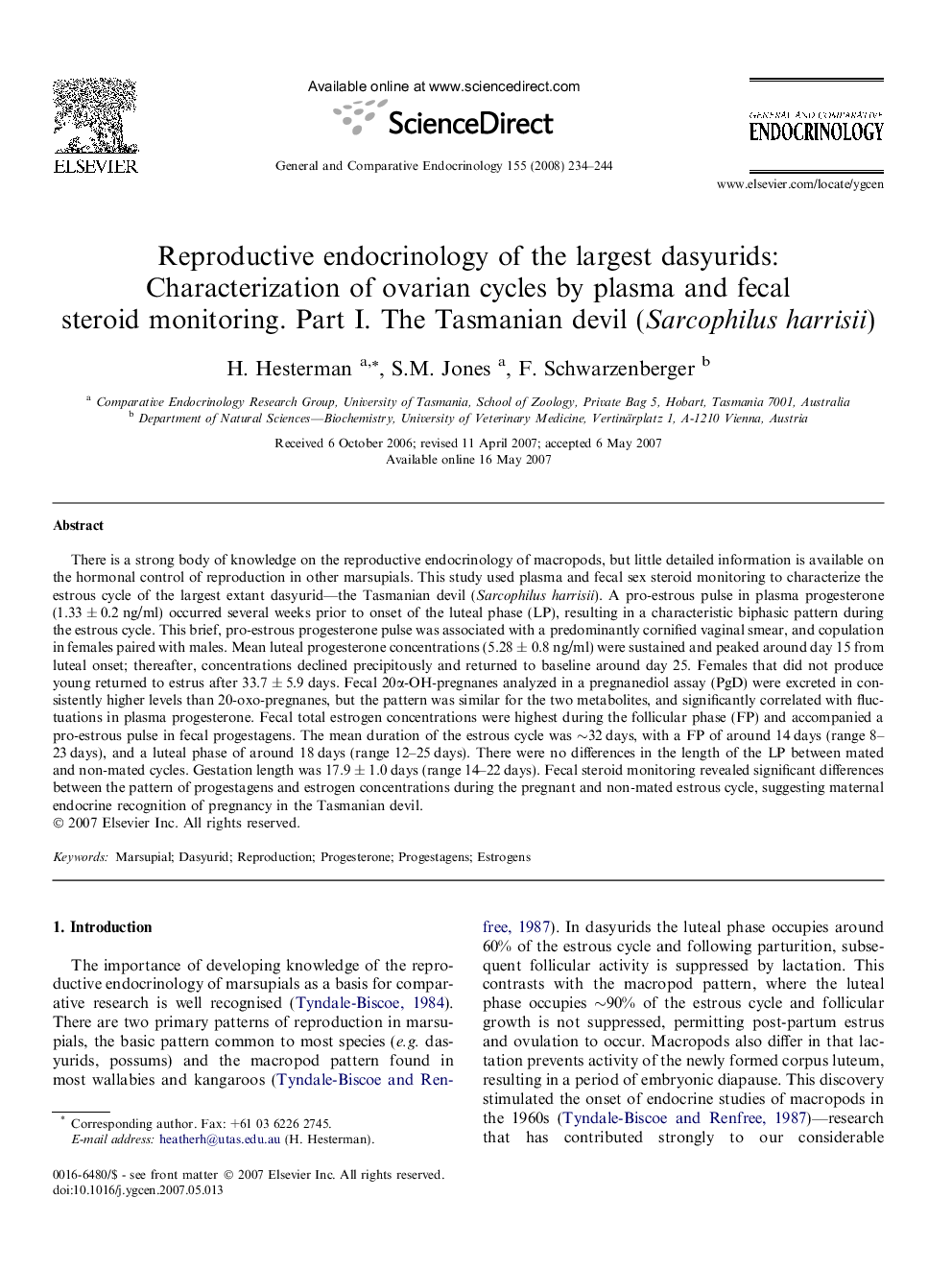| Article ID | Journal | Published Year | Pages | File Type |
|---|---|---|---|---|
| 2801897 | General and Comparative Endocrinology | 2008 | 11 Pages |
There is a strong body of knowledge on the reproductive endocrinology of macropods, but little detailed information is available on the hormonal control of reproduction in other marsupials. This study used plasma and fecal sex steroid monitoring to characterize the estrous cycle of the largest extant dasyurid—the Tasmanian devil (Sarcophilus harrisii). A pro-estrous pulse in plasma progesterone (1.33 ± 0.2 ng/ml) occurred several weeks prior to onset of the luteal phase (LP), resulting in a characteristic biphasic pattern during the estrous cycle. This brief, pro-estrous progesterone pulse was associated with a predominantly cornified vaginal smear, and copulation in females paired with males. Mean luteal progesterone concentrations (5.28 ± 0.8 ng/ml) were sustained and peaked around day 15 from luteal onset; thereafter, concentrations declined precipitously and returned to baseline around day 25. Females that did not produce young returned to estrus after 33.7 ± 5.9 days. Fecal 20α-OH-pregnanes analyzed in a pregnanediol assay (PgD) were excreted in consistently higher levels than 20-oxo-pregnanes, but the pattern was similar for the two metabolites, and significantly correlated with fluctuations in plasma progesterone. Fecal total estrogen concentrations were highest during the follicular phase (FP) and accompanied a pro-estrous pulse in fecal progestagens. The mean duration of the estrous cycle was ∼32 days, with a FP of around 14 days (range 8–23 days), and a luteal phase of around 18 days (range 12–25 days). There were no differences in the length of the LP between mated and non-mated cycles. Gestation length was 17.9 ± 1.0 days (range 14–22 days). Fecal steroid monitoring revealed significant differences between the pattern of progestagens and estrogen concentrations during the pregnant and non-mated estrous cycle, suggesting maternal endocrine recognition of pregnancy in the Tasmanian devil.
